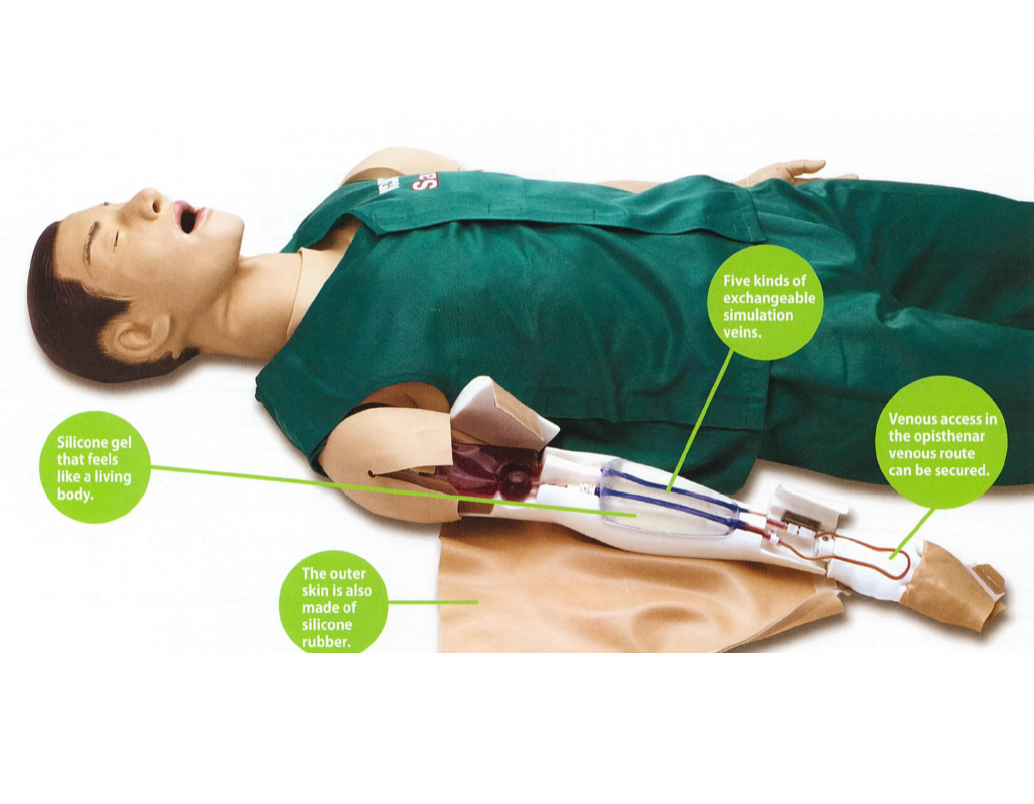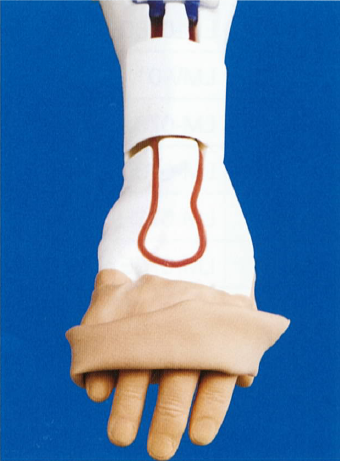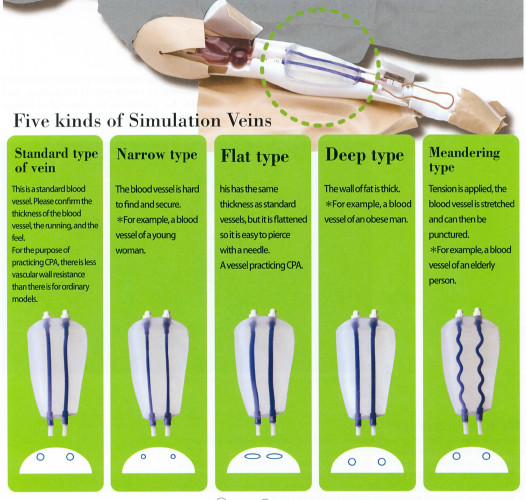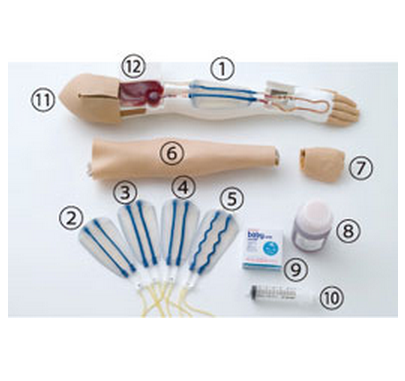Home ->
Medical Education ->
Simulators -> Clinical Skills -> Vascular Access -> Securing venous tract Model
- Can practice venous securance for antebrachial, median venous and opisthenar venous.
- Setting various scenes, there are five kinds of simulation veins which are as exchangeable supplies.
- Using silicone rubber to main parts such as skin etc., appearance and feeling are very similar to that of human skin for training with reality.
- Simulating the pressure of venous, back-flow of venous blood can be confirmed.
Five kinds of Simulation Veins
Standard type
This is a standard blood vessel. Please confirm the thickness of the blood vessel, the running, and the feel. For the purpose of practicing CPA, there is less vascular wall resistance than there is for ordinary models.
Narrow type
The blood vessel is hard to find and secure.
*For example, a blood vessel of a young woman
Flat type
This has the same thickness as standard vessels, but it is flattened so it is easy to pierce with a needle. A vessel practicing CPA.
Deep type
The wall of fat is thick.
*For example, a blood vessel of an obese man.
Meandering type
Tension is applied, the blood vessel is stretched and can then be punctured.
*For example, a blood vessel of an elderly person.
Components
① Vein part (standard type)
② Vein part (narrow type)
③ Vein part (flat type)
④ Vein part (deep type)
⑤ Vein part (meadering type)
⑥ Arm skin
⑦ Opisthenar
⑧ Simulated blood (500ml)
⑨ Baby powder
⑩ Syringe
⑪ Upper arm skin for main body
⑫ Blood bag
⑬ Opisthenar venous tube (10pcs/set)
Emergency medical technicians need to secure sinus venous when administering medicine. This model is to thoroughly practice sinus
venous securance and to strain for training basic sinus venous securance and application practices such as for narrow / deep veins. It can be installed in Advanced Life Support Simulator.






